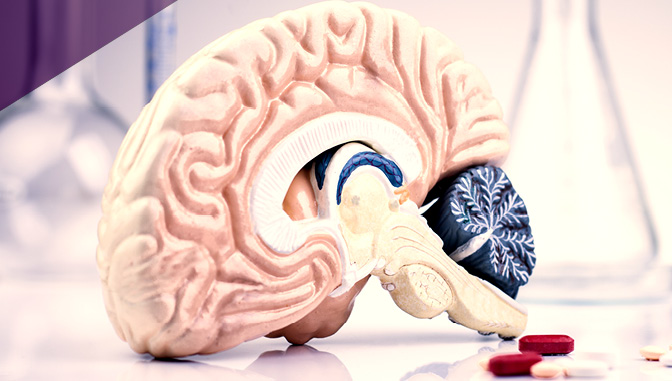The Science of Addiction

With the opioid addiction crisis, there has been much media and social media attention on addiction and the impacts on the person, their loved ones, and communities. With increased publicity can often come a resurgence of misinformation. This article can help you learn what addiction is and what it is not.
What Is Addiction?
The National Institute on Drug Abuse defines addiction as a chronic disorder, characterized by compulsive seeking of a substance, continued use despite harmful consequences, and long-lasting changes to the brain. Numerous research characterize addiction as a disease of the brain, and a key feature of addiction is the propensity to relapse, or to go back to using the substance despite efforts to stop. People can become addicted to many substances. We all have heard about addiction to alcohol, nicotine, illegal drugs, certain prescription medications like opioids and stimulants, and even gambling. People can also become addicted to food, non-alcoholic beverages (coffee and energy drinks), sex, exercise, shopping, the internet (social media), video games, television, and other forms of technology. It often surprises people to learn that addiction is not necessarily to a substance. Many addictions are behavior-based. Key features of addiction are an inability to quit and a desperate need for more, despite the negative consequences.
Why People Get Addicted
People become addicted for any number of reasons. Someone usually starts out using a substance, or performing an activity, out of curiosity or peer pressure. As the object of addiction is ingested or performed, the “reward center” of the brain is engaged. Specifically, dopamine, often called the pleasure hormone, is released. For those who become addicted, the pleasure becomes a driving need. They seek out the substance or behavior increasingly, until they become dependent on it. Sometimes this conversion from pleasure to need is slow, but for some, the need develops quickly.
Addiction is a biopsychosocial disease, like other chronic diseases. With psychological and emotional addiction, a person craves the substance or behavior and needs it to feel good. People may become anxious, irritable, or even depressed when they cannot engage in an addictive behavior. As the disease progresses, people may exhibit denial about the extent of the problem. As the brain chemistry changes over time, the need becomes increasingly physical. Here, we start to see symptoms like increased tolerance and withdrawal. While tolerance can be subtle in onset — the person is using more and more to get the desired dopamine release —withdrawal is extremely challenging for the addicted person and their loved ones. Symptoms can include vomiting, nausea, shaking, hallucinations, and more. It is hard to separate the emotional, psychological, and physical facets of addiction.
There are many misassumptions about addiction, and some of these can derail a person from admitting a problem, seeking treatment, and staying free from the addiction. Now that we have discussed some facts about addictions, let’s debunk a few myths.
- Quitting is a matter of will power. “If they really wanted to quit, they would do it” is one of the most common myths out there. Addiction has power over the person, not the other way around. Some people can decide to quit and do so, but most need professional help to overcome the hold addiction has on them.
- Once you quit, you’re cured. Addiction — no matter the substance or behavior — is a lifetime illness. Though there are rare cases where someone “quits cold turkey,” for most people, slipping back into addiction, or relapsing, is a major concern. A popular mantra for people in 12-step recovery programs is “One Day at a Time,” with many looking at one hour or minute at a time during more vulnerable periods. The good news is that, as a chronic illness, there is treatment. This disease can be put into remission!
- I’m doing great in my job so… I don’t have a problem! The reality is that many people can function for long periods of time, even indefinitely, without any outward problems. They may work in a culture where addictive behaviors are considered normal or have people who shield them from the negative impacts of the addiction. For most, if addiction is present there will eventually be serious consequences on a person’s life: health, family, friends, legal jeopardy, ability to perform work functions, etc.
- If someone relapses while in recovery, they’re back to square one. Sometimes people in recovery relapse, falling back into an addictive cycle. The relapse may last for a day, or longer. With help, people can continue moving forward in their recovery. Yet, it is critical to realize that relapses are dangerous. I knew a highly dedicated health professional who relapsed after years of sobriety and passed away within days from an overdose. Relapses require intervention and must be taken seriously.
- My child/spouse/parent can’t be an addict, I would know! Addiction carries tremendous shame and stigma. People will often go to great lengths to cover it up. Even while living in the same household, people can hide addiction for long periods of time. Loved ones can miss warning signs or ascribe them to stress.
- People with addictions are bad people. Addiction is not a moral failing. While people who are addicted often make poor choices and some may even do terrible things, the reality is that they have a brain disease that impairs judgment and can override the moral compass.
- My child/spouse/parent is addicted, and it’s my fault. Addiction is a family disease. Family members often blame themselves for the person’s addiction, wondering what they did wrong or what they could have done differently. This is especially true for children. Because it is a family disease, it is necessary for the entire family to get help. Even if the addicted person does not seek help, getting support can be invaluable for loved ones in coping with the situation.


